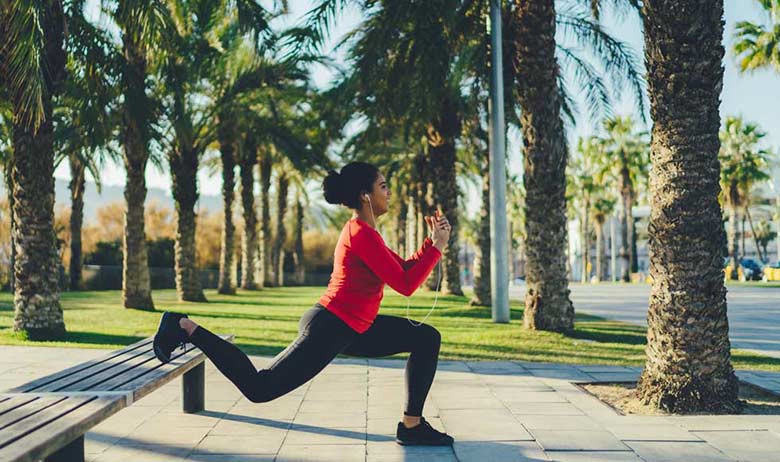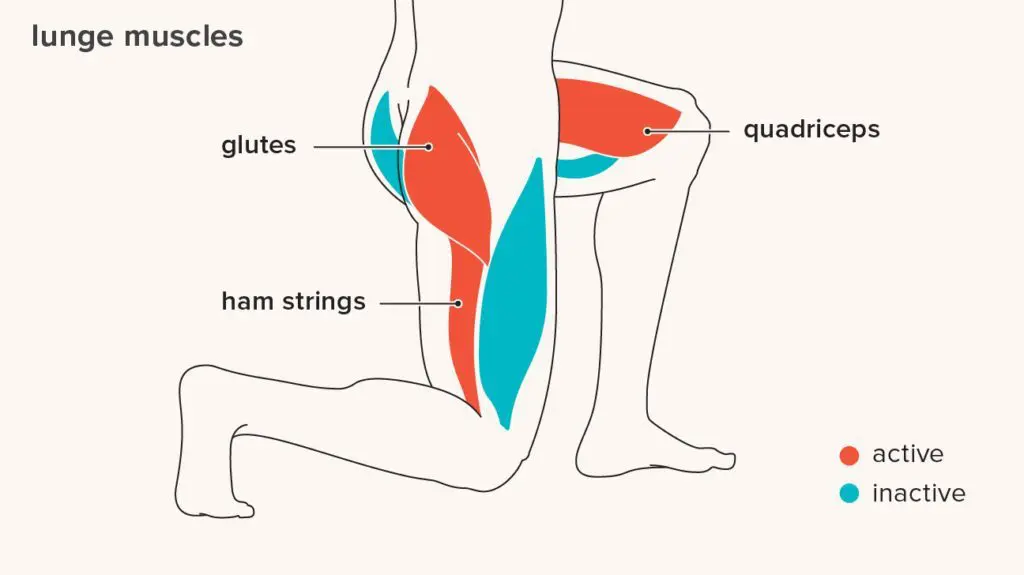
The best online fitness resource you'll ever need. We filter out the BS to ensure you meet your health and fitness goals!

The best online fitness resource you'll ever need. We filter out the BS to ensure you meet your health and fitness goals!

Elevated lunges are lunge alternatives that really zero in on your glutes and hamstrings, whilst also working your glutes. They will help you to build lower body strength alongside stability, balance and proprioception through the whole body.
You can perform elevated lunges with bodyweight alone or with weights (dumbbells, cleaned kettlebells and barbells will all work equally well). Either way, they will be low impact, meaning that they are kind to your joints, and will put a lot of pressure into the glutes, representing a perfect accessory to heavy squats.
Good-quality lunges should form a key component of any leg routine in the gym. They help to isolate one leg from another, meaning they are great for working out any muscle or strength imbalances. They also provide an intense form of stimulation, making them perfect for chasing hypertrophy after your strength lifts.
You should always include some form of lunges in your training plans.
However, there are a couple of issues with some of the more common types of lunges- front lunges, walking lunges, rear lunges, and so forth.
Firstly, walking lunges are a bit of a write off at the moment. Gyms around the world are bringing in social distancing measures in the wake of covid-19. In many fitness venues, trainees are asked to stay within small, 2m square boxes. This is fair enough and it’s plenty of room in which to work out: however, it stops us from being able to do walking or carrying exercises. Farmers’ carries, waiters’ walks, yoke walks and- no surprises- walking lunges are out for the foreseeable future.
Secondly, lunges can pose issues for people with joint problems and/or limited ranges of motion, especially in the knees. They ask a little too much forward motion for comfort as all that pressure is forced down into the knee joint. Though proper technique can alleviate much of this, sometimes they just won’t work.
Enter the elevated lunge- you get all the benefits of a lunge without either of the above problems arising.
As mentioned above, joint issues abound when lunges are performed incorrectly. Though elevated lunges are kinder to joints and more forgiving on those with imperfect form, it’s still important to get them right: doing so will mean the difference between creaky knees and poor gains and a first-class leg workout.
Move slowly through your lunges, especially at first. Go light- you will likely need far less weight than you think to reach overload and elicit a training effect. You’re welcome to push the weight upwards as you gain experience but, at least at first, keep it manageable.
Make sure you’re also able to comfortably work through a full range of motion. If you can’t, reconsider your foot placement. Experiment until the movement is fluid and pain-free. Don’t use any kind of added resistance (weights) until you achieve this fluidity.
When you’re happy with your range of motion and the movement as a whole, and you’ve chosen an appropriate resistance level, you will be ready to begin working sets of elevated lunges.
To perform elevated lunges:

All lunges work the legs, as noted above. Elevated lunges are no exception. They are perfect for mid- to high-rep sets, looking for strength and hypertrophy through all relevant muscles, alongside improving range of motion through the knees, and balance and proprioception more globally.
The main muscles worked by lunges include:
All lunges are perfect for hypertrophy in all the above-mentioned muscles and muscle groups. There are, however, some specific advantages to performing elevated lunges that bear mentioning. These include:
Elevated lunges are one of the best exercises going for getting into the glutes (the muscles of your backside). Aside from the obvious aesthetic benefits of having a well-shaped rear, this will bring some great carry-over benefits.
Posture will be improved from having strong, well-developed glutes. Squats (and, really, and lower body movement) rely on the glutes, so having stronger glutes will mean overall strength improvements. Activities like sprinting, running and walking are all dependent to a greater or lesser degree on glute explosive strength and durability.
For longevity in your fitness, you cannot afford to overlook any exercise with this kind of benefit to your glutes.
Unilateral exercises help to get rid of any muscular imbalances caused by bilateral movements like squats and deadlifts. This is especially the case with elevated lunges as the rear, non-active leg really cannot come into the movement all that much. They are therefore ideal for attaining symmetry in your lower body.
These are hard movements to perform- you will find it hard to balance at first. However, your proprioception and core stability will improve by performing them: soon enough, you will be able to run through rep after rep with no issues.
If you’re looking for a way to change up your leg routine, to balance out the muscles of your lower body, to elicit greater overload through your legs, or to improve athleticism as a whole, elevated lunges are a must. Give them a go today and see for yourself.